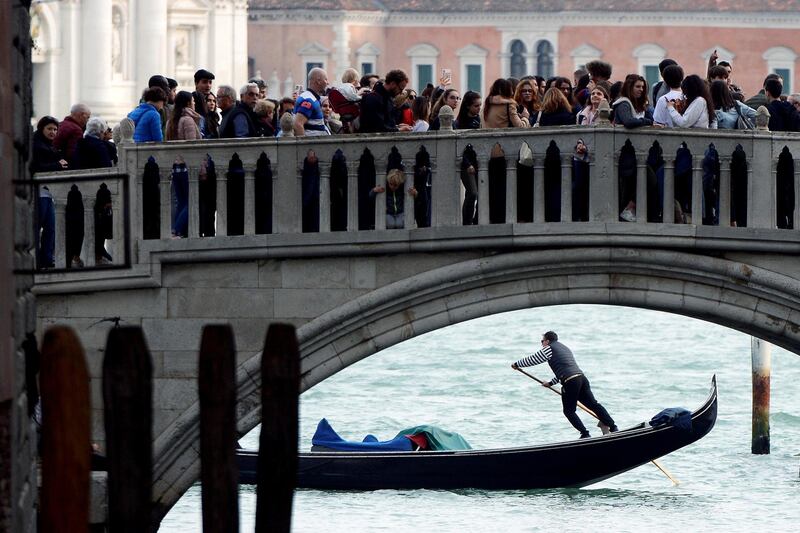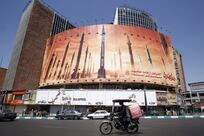The town of Lindos on the Greek island of Rhodes is an extraordinary place. It's said to date from the early Dorian period 3,000 years ago. Since then, Lindos, and the island of Rhodes itself, have seen many visitors - ancient Greeks, Phoenicians from what is now Lebanon, Romans, Jews, Christian warriors from the crusades, Ottomans, Italians, Germans during the Second World War and now modern-day Greeks. In Rhodes town, within a short walk you can see an Ottoman mosque, Byzantine, Catholic and Greek Orthodox Christian churches, and the oldest surviving synagogue in Greece. The island of Rhodes has 100,000 permanent inhabitants but every summer the population rises by a third to at least 130,000 every month, thanks to the blessing - and for some, the curse - of tourism.
The blessing is obvious. Locals in Rhodes work hard between May and October to cater for the tourist invasion but then things go quiet over the winter. In Lindos the population of the town is reduced to a few hundred. One local told me his money ran out by the end of February and he was glad when the tourists returned with the spring sunshine. But the curse is obvious too. Mass tourism worldwide creates jobs and opportunities but also bottlenecks, pollution, traffic jams, crowded beaches and new words such as "over-tourism" or, as they say in another tourist hotspot, Barcelona, "turismofobia".
I'm in Rhodes because a member of my family has been writing a book about the island during the Second World War. He recommended we visit one of the island's great sights, the Acropolis in Lindos. It's a fort and Greek temple on top of an imposing cliff overlooking the town and the blue waters of the bay below. "We must go early," I was told, "to get up to the Acropolis before the crowds". As the site opened one morning, we walked around this most wonderful testament to the history of the eastern Mediterranean, marvelling at the views, looking at the restoration work, trying to imagine what it must have been like when the Doric temple was built in 300BC on the ruins of an even more ancient temple. Then came the Byzantines, and their church still looks impressive. And then the Knights of St John, who built their extraordinary new fortifications on top of Byzantine ruins, only to leave a century or so later when the Ottomans proved unstoppable.
But after an hour, the visit became much less pleasant as tour guides brought in busloads of other tourists. The walk down from the heights was like negotiating a London Tube station in rush hour, with queues stretching all the way back to the narrow streets of the old town. And that’s the problem. As tourists we cherish the memories of these great places we visit - but we would prefer that others are kept away so we could enjoy our private pleasure. And Lindos is just a tiny example of the mixed blessing and curse of tourism around the world.
Rome, Venice, Barcelona, the Scottish Isle of Skye, Uluru in Australia, Machu Picchu in Peru, Dubrovnik, Amsterdam, Paris, the Grand Canyon - the list of wonderful tourist destinations grappling with over-tourism is endless. The statistics are stark. Barcelona had 32 million visitors last year. The city's population is just 1.6 million. The city where I grew up, Edinburgh, has a population of half a million - yet has around four million tourists visiting every year. Venice has a population of just 250,000 and attracts 100 times that, amounting to about 25 million tourists annually.
Tourism growth is for many places, including Lindos, a hugely important part of the economy. It is also a sign of increasing prosperity in developing countries. Chinese and Indian tourists for example, have grown significantly in numbers over the past few years. But some tourism is less welcome. Cruise ships, for example, disgorge hundreds, sometimes thousands, of passengers in Venice or Mallorca or Barcelona, and yet the net contribution to the local economy is often insignificant. Passengers tend to stay ashore only a short time. They eat pre-paid meals on board their ships rather than visiting local restaurants. Buying a few tee shirts and souvenir trinkets, local people complain, does not make up for the congestion and pollution.
So what is the answer? There is no doubt taxes and levies change behaviour. Venice is considering banning cruise ships from docking in the historic centre to limit the environmental damage and could start charging visitors a daily fee of about €10 ($11) merely to enter the city, almost as if Venice itself is a theme park. Other cities are considering restrictions on Airbnb type rentals and hotel room taxes. That might ease resentment from locals and also boost services during the months when there is less tourism. But the core problem is unsolvable. There is only one Venice. There is only one Machu Picchu. There is only one Acropolis on Lindos. I’m just glad that I was advised to get there early, before huge numbers of those terrible tourists arrived. And tourists are terrible of course - except for those magical moments when you happen to be one yourself.
Gavin Esler is a journalist, author and presenter





